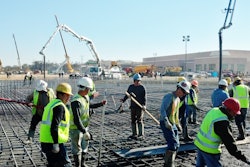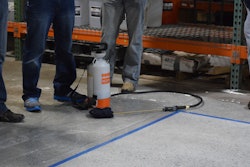As a contractor, you know concrete is a perishable product. As such, taking the time to plan out your concrete pour is critical to your success on the jobsite. Here are a few tips you should consider in order to complete the pour.
Planning the pour
Schedule a pre-slab meeting between the project superintendent and the crew foreman. The pre-slab meeting will allow all parties involved in the pour to review explicit details of the project:
- Finish requirements
- Equipment required to complete the job
- Pour date and schedule
- Labor requirements
- Review the mix design
- Rebar chairing/pulling
- Saw cut layout
This meeting should be scheduled at least one week in advance of the pour. This is also a good time to start reviewing the weather forecast for the day of the pour.
Prepare for the pour
Three to five days prior to the pour, you should schedule a meeting between the concrete superintendent and the ready-mix service tech. The ready-mix tech needs to know exactly where the trucks are going and how the jobsite will be marked. This is also an opportunity to identify the staging and washout areas on site.
The layout of the saw cuts are reviewed and confirmed with specifications, as well as the method of curing.
Some contractors utilize a pre-pour checklist to provide a simple reminder of the key points in preparation. A pre-pour checklist will also ensure consistency on each and every pour.
The day before the pour, call your concrete supplier to double check your order. On the call, you’ll want to make sure the correct mix is ordered and if you’ll have enough concrete to complete the job.
You should also make sure you have your curing product and all required equipment onsite to complete the pour.
Proceed with the pour
On the day of the pour, the concrete superintendent is responsible for:
- Making certain the testing company is checking slumps of trucks
- Staging of the trucks and avoiding bottlenecks while unloading and washing out
- Making sure all trucks are cycling to return to the plant and back to the project in a timely manner
- Maintaining visual contact with the pour to avoid damage to underground plumbing/electrical by trucks
- Ensuring reinforcing rebar/mesh is being chaired and/or pulled correctly
- Ensuring that vibrating is being done correctly
- Ensuring that carpenters are watching forms to avoid bowing/blow-outs and installing necessary cold joints
During the pour, some contractors take pictures to document the pour. Should a problem arise in the future, documenting the job with pictures may be beneficial to you.


















